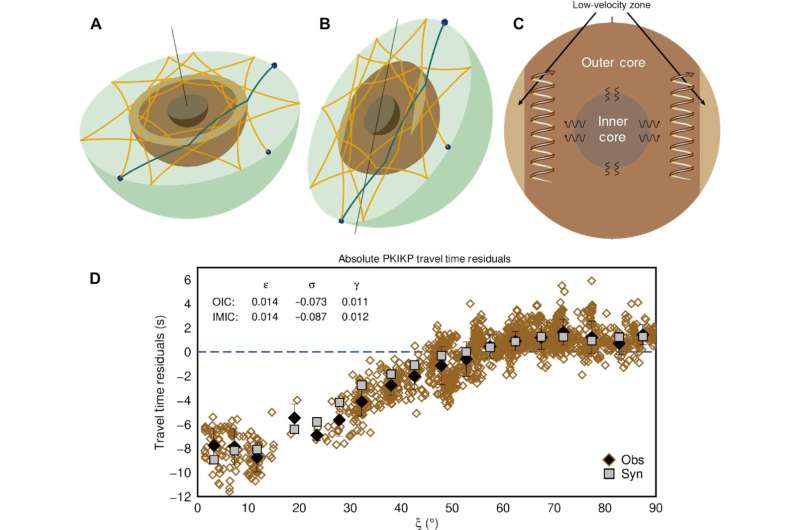An invisible, weak energy field wrapped around our planet Earth has finally been detected and measured.
It’s called the ambipolar field, an electric field first hypothesized more than 60 years ago
[…]
“Any planet with an atmosphere should have an ambipolar field,” says astronomer Glyn Collinson of NASA’s Goddard Space Flight Center.
“Now that we’ve finally measured it, we can begin learning how it’s shaped our planet as well as others over time.”
Earth isn’t just a blob of dirt sitting inert in space. It’s surrounded by all sorts of fields. There’s the gravity field.
[…]
There’s also the magnetic field, which is generated by the rotating, conducting material in Earth’s interior, converting kinetic energy into the magnetic field that spins out into space.
[…]
In 1968, scientists described a phenomenon that we couldn’t have noticed until the space age. Spacecraft flying over Earth’s poles detected a supersonic wind of particles escaping from Earth’s atmosphere. The best explanation for this was a third, electric energy field.
“It’s called the ambipolar field and it’s an agent of chaos. It counters gravity, and it strips particles off into space,” Collinson explains in a video.
“But we’ve never been able to measure this before because we haven’t had the technology. So, we built the Endurance rocket ship to go looking for this great invisible force.”
[…]
Here’s how the ambipolar field was expected to work. Starting at an altitude of around 250 kilometers (155 miles), in a layer of the atmosphere called the ionosphere, extreme ultraviolet and solar radiation ionizes atmospheric atoms, breaking off negatively charged electrons and turning the atom into a positively charged ion.
The lighter electrons will try to fly off into space, while the heavier ions will try to sink towards the ground. But the plasma environment will try to maintain charge neutrality, which results in the emergence of an electric field between the electrons and the ions to tether them together.
This is called the ambipolar field because it works in both directions, with the ions supplying a downward pull and the electrons an upward one.
The result is that the atmosphere is puffed up; the increased altitude allows some ions to escape into space, which is what we see in the polar wind.
This ambipolar field would be incredibly weak, which is why Collinson and his team designed instrumentation to detect it. The Endurance mission, carrying this experiment, was launched in May 2022, reaching an altitude of 768.03 kilometers (477.23 miles) before falling back to Earth with its precious, hard-won data.
And it succeeded. It measured a change in electric potential of just 0.55 volts – but that was all that was needed.
“A half a volt is almost nothing – it’s only about as strong as a watch battery,” Collinson says. “But that’s just the right amount to explain the polar wind.”
That amount of charge is enough to tug on hydrogen ions with 10.6 times the strength of gravity, launching them into space at the supersonic speeds measured over Earth’s poles.
Oxygen ions, which are heavier than hydrogen ions, are also lofted higher, increasing the density of the ionosphere at high altitudes by 271 percent, compared to what its density would be without the ambipolar field.
[…]
The research has been published in Nature.
Source: Scientists Detect Invisible Electric Field Around Earth For First Time : ScienceAlert



